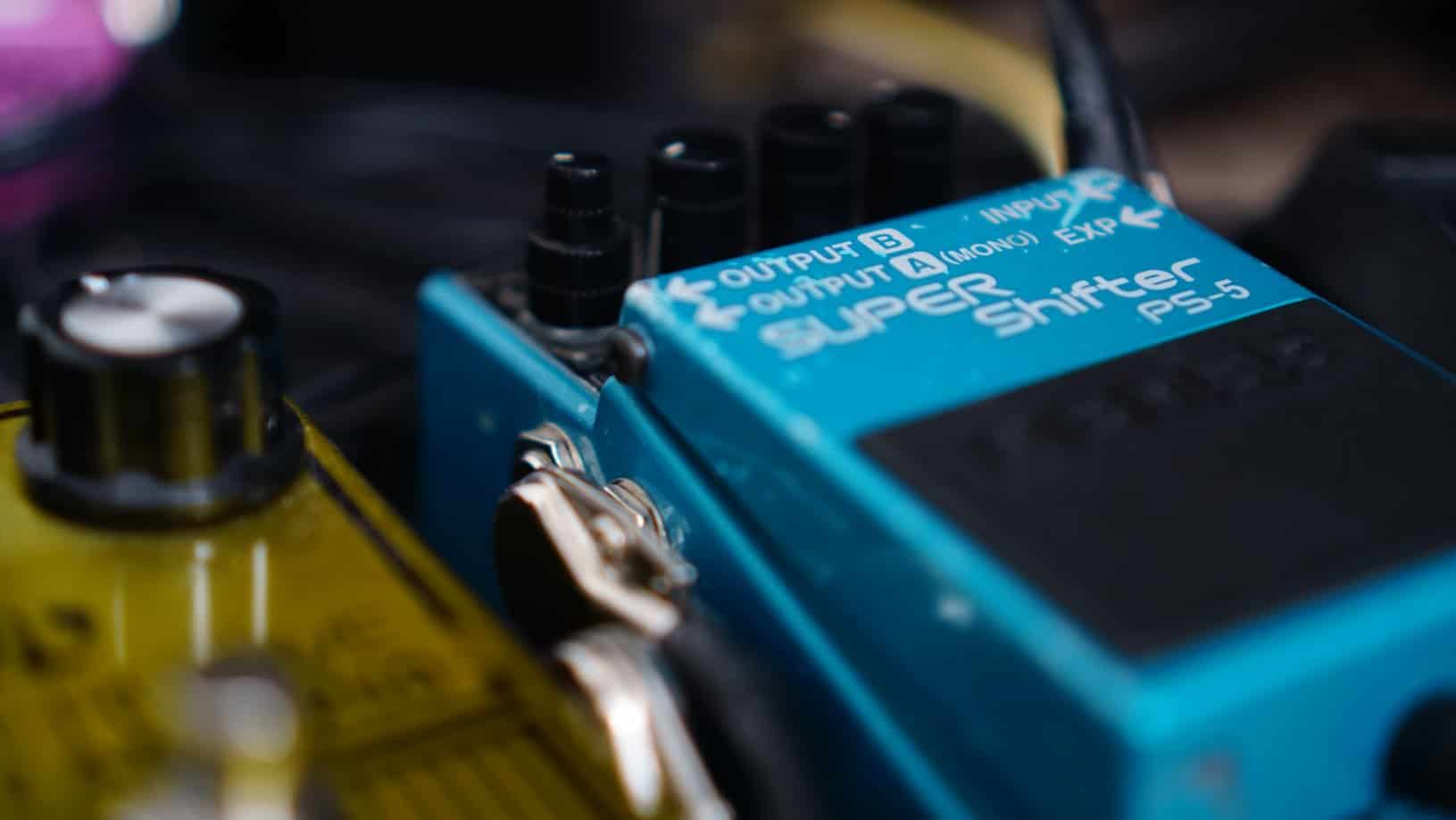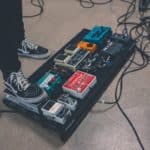Guitar pedals are the cornerstone of a player’s tone.
They have a very important role in shaping the tone and even creating certain ambiances when you are playing.
The problem is that all of this magic can suddenly come to an abrupt stop if your batteries start faltering.
To avoid this tragedy, you could start thinking about optimizing your battery swaps so that you never run into the situation of losing your sound in the middle of a show.
The main thing to consider here then is: how long do guitar pedal batteries last? Well, here’s a short answer.
Guitar pedal’s battery life will depend on the milliamp-hour drain of each circuit, which in turn depends on the complexity of the effect. However, a rough estimate will give you about 60 play hours for low drain pedals such as distortions and overdrives, and 10 hours for more complex modulation effects.
In this article, I will dive deep into this topic, and try to cover the most pressing questions most players have about this matter.
After leaving this page you will have a clearer idea of how long do guitar pedal batteries last, what affects their lifespan, and what are your alternatives to overcome this hurdle.
Are you ready to get started?
Let’s go!
What are the factors that determine the energy drain of a guitar pedal?
The main factor that determines how much power a pedal needs to work is the complexity of its circuit. This, of course, is an oversimplification, but it acts as a great rule of thumb.
Simpler pedals such as fuzzes, distortions, and overdrives, will usually be rated with a drain of under 10 milliamps per hour, while more complex modulation effects, for instance, could suck up to 70 milliamps hourly.
These numbers don’t make any sense without appropriate context, and what we are lacking here is what is the total amount of milliamps a 9v battery has to offer, on average.
Most common brands in the market offer products rated with a capacity of 300 to 600 milliamps, on average.
By generalization, and doing simple math, using the following formula provided by Wampler Pedals:
Battery Life = Battery Capacity in mAh / Load Current in mA x 0.70
You can conclude that simpler pedals (distortion) will run for up to 60 hours, while more complex ones will go through your batteries in under 10 hours.
This, I think is the main intuition you need to grasp without getting too technical.
Is there a way of knowing how much energy a battery has left?
Sadly, there’s no straightforward way of knowing how much energy a 9v battery has left without using any tools.
Although there’s the age-old test of licking both contacts and expecting a zap it could only work to determine if the battery is completely dead.
In guitar pedals, dying batteries tend to have noticeable effects in the intensity of the “on” led, and mostly on their tone.
This happens to an extent to which many players even prefer how their effects sound when the voltage delivered starts to wane.
The following video explains this phenomenon in a very clear fashion:
Do pedals drain their batteries when turned off?
Guitar pedals will drain their batteries when they are turned off because most of them are designed to be always running. This is to avoid any crackling or popping noises when the effect starts up or shuts down.
A way of avoiding this drain, other than removing the battery altogether, is by unplugging any jack connected to the input and/or output of the pedal.
This works because many pedals have internal switches that turn off their always-on functionality when nothing is connected to them.
How to extend the lifespan of your pedal’s battery
The best way of extending the lifespan of a pedal’s battery is just by avoiding unnecessary drain when the rig is not being used.
To do so, you can just remove the batteries and store them in a dry, climate-controlled recipient, or just make sure you unplug every output and input from every pedal.
This is not something fun to do every time you finish playing, but it will save you a few bucks down the road, and even some headaches troubleshooting why you have no sound when the reason is a dead battery.
Should you use new batteries for every gig?
If you can afford it, you can ensure your pedals will be in perfect working conditions by getting fresh batteries for every important gig.
Just remember to unplug their input and output jacks after the soundcheck, so you don’t get on the stage to a dead battery.
You can store the used batteries and utilize them for rehearsals and practicing at home.
At least for very important gigs, sometimes it’s better safe than sorry.
Alternatives to running your pedals on batteries
Finally, I think that the idea of running your pedals on batteries is dumb.
I’m sorry about that.
The thing is that there is no real evidence that you will get a better sound out of your effects with a battery.
A high-end power supply will do the trick just fine.
I know, for busking or small gigs with a single pedal there could be a case for batteries, I can accept that.
But for most of us, the most convenient way around the hassle of pedal batteries is just getting a decent power brick.
Another alternative to consider is rechargeable batteries, and I have nothing against them, but then you will have another extra chore to take care of before and after playing, every time.

Hello there, my name is Ramiro and I’ve been playing guitar for almost 20 years. I’m obsessed with everything gear-related and I thought it might be worth sharing it. From guitars, pedals, amps, and synths to studio gear and production tips, I hope you find what I post here useful, and I’ll try my best to keep it entertaining also.





